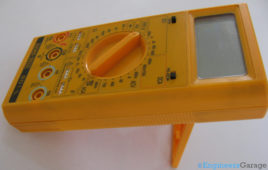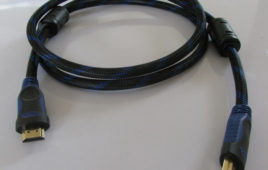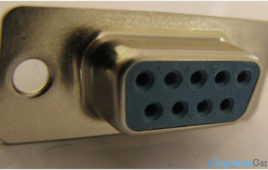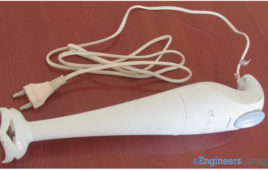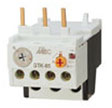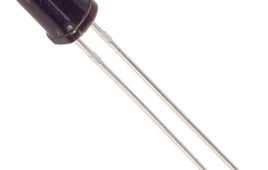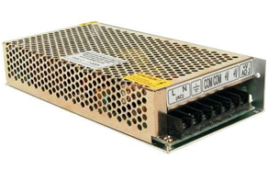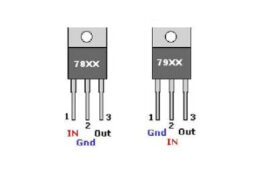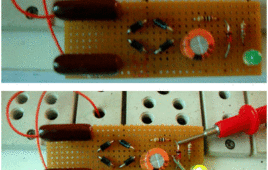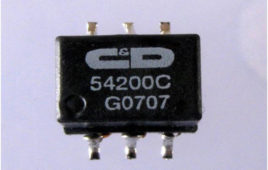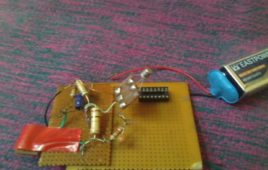As the name suggests, multimeters are those measuring instruments which can be used to calculate multiple circuit characteristics. Making them digital gives highly precise outputs as unlike their analog counterparts, there is no needle whose pointer is to be figured out. Multimeters are into electronic measurement purposes since long and are expected to stay for long and get more modifications of measuring quantities. Analog multimeters were initially in trend but required calibration and human error often caused errors in measurements. With digital measurements, results are not only more accurate but can also be resolved to a high level.
Insight – How HDMI Cable Works
To make the audio-visual entertainment experience as natural as possible is one of the major targets of electronic entertainment companies. The journey of televisions from Black & White to plasma and now to LEDs is a fair example of it. High definition digital recording has been made possible through DVDs and Blu-rays. However, to transmit the same quality of high definition data to the display, high quality interface is needed. In pursuit of this life like quality, electronics giants of the world: Sony, Thomson, Panasonic, Toshiba, Phillips and Hitachi, made a joint research group that has given one of the best ways to transmit and access video and audio, HDMI.HDMI stands for High Definition Multimedia Interface. A HDMI cable is a single cable that serves as link for audio as well as video applications. For a video recorded in high definition, a standard Audio-video component cable gives an output of 480 pixels per inch.
Insight – How RS232 Connector Works
Serial interfacing is one of the most common protocols to make two electronic gadgets communicate. In such interfacings, the data is sent sequentially and bit bybit. RS232 is one sub type of serial interfacing that was introduced in the year 1932. Available in 9 pin and 25 pin configurations, RS 232 pins allow data exchanges at the maximum of 256kbps. Some well known applications of these connectors include linking modems to computers and other micro controller based UART electronic gadgets. Of course, such an interfacing would require different types of connectors; in this case, RS232 connectors are used. The Insight covers a conventional 9 pin female RS232 connector. Let’s find out the outer and inner details of it.
Insight – How Immersion Blender or Hand Blender Works
Yes. This week’s Insight is a Hand Blender. On the last Saturday morning, after a full night’s work at the EG Labs, the whole Engineering Garage team gathered to make smoothies and sandwiches before retiring to bed at dawn (BTW, the Garage has enough space and equipments to be used as a kitchen, a rest house and a highly charged PS-3 arena during weekends), and one of our team members screwed the Hand Blender open. Thus, the Insight. Hand blenders were first invented by the Swiss and were straightaway recognized as a good time saver: a solution for instant food meshing, mixing, whipping and all the mishy-mashy things they do in kitchen. It is easy to guess that this light weight, a foot tall gadget houses a motor, a PCB and some (optional) accessories that would allow speed control and indicative light options etc. BUT: exactly what kind of motor does a simple blender have? How can it tolerate the forces generated by a motor, its body being made of plastic? Can its motor have different configurations? Let’s find out what the nerds in our team have discovered by reverse engineering a [Phillips HR1350] Hand Blender while sleepwalking.
Insight – Learn the Working of a Motion Sensor or PIR Sensor
The modern world is filled with gadgets that get excited when they sense human motion. Automatic doors in elevators and shopping malls, burglar alarms at houses and shops, automatic lighting systems, electronic amenities in washrooms are just a few examples where human presence or absence puts the device into active or passive state. Smart, right? Now, what if we tell you that behind this smart response to motion is a gizmo that does not even reach the 2cm mark in size. Known as Pyroelectric or Passive Infrared Sensor (PIR, in both cases), this small electronic device is the curious case for this Insight.How does PIR sensor selectively responds to human radiated IRs? Upto what range can this sensor work? What lies inside this sensor that makes it work? This and answers to more questions in this Insight on PIR sensors. What adds more charm to this Insight is that the Panasonic 10m sensor taken is also one of the smallest PIR sensors commercially available till date.
Insight – Learn the Workings of a Gas Sensor
In current technology scenario, monitoring of gases produced is very important. From home appliances such as air conditioners to electric chimneys and safety systems at industries monitoring of gases is very crucial. Gas sensors are very important part of such systems. Small like a nose, gas sensors spontaneously react to the gas present, thus keeping the system updated about any alterations that occur in the concentration of molecules at gaseous state. Gas sensors are available in wide specifications depending on the sensitivity levels, type of gas to be sensed, physical dimensions and numerous other factors. This Insight covers a methane gas sensor that can sense gases such as ammonia which might get produced from methane. When a gas interacts with this sensor, it is first ionized into its constituents and is then adsorbed by the sensing element. This adsorption creates a potential difference on the element which is conveyed to the processor unit through output pins in form of current. What is this sensing element? Is it kept in some chamber or is kept exposed? How does it get current and how it is taken out? Let’s find out in this Insight!!!
ESS solutions from onsemi
onsemi Energy Storage Solutions capture energy produced at one time for use later. It involves converting energy from forms that are difficult to store to more convenient or economically storable forms. Adding a battery allows storing this extra electricity to use as and when needed. ESS has a similar architecture to UPS, including a high-power conversion…
Simple Door Alarm
You can use this Simple Alarm to protect the door or Window. It gives a loud beep and switch on the room light when an intruder/burglar attempts to breaks the door lock. The alarm functions only after 5 minutes to confuse the intruder. Working of this burglar alarm circuit is simple. IC1 is used to…
Electronic Guard to Protect Electronic Devices
This circuit can protect your Electronic devices like TV from inrush current. Very high spikes can develop at power on due to sparking in the switch and more serious effects occur when power resumes after a power failure due to high magnetic field in the distribution transformer. When we keep the TV in standby mode through…
Electronic Circuit Breaker
This circuit can sense the overload condition and breaks the power if the load increases above the set point. It is an ideal circuit to protect Uninterrupted Power Supply devices like Inverter.Let us see its working …The Optocoupler MCT2E and the Resistor R3 (1 Ohm 10 Watts) will do the trick. The Optocoupler has an LED and a Phototransistor inside with connecting leads. The LED of MCT2E is connected parallel to the resistor R3 with a current limiter R2 for the LED. The phototransistor of Optocoupler is connected to the transformer derived 9 volt DC through the current limiter R1. The load is connected through the Common and NC contacts of the relay. So it will work normally at power on.
Optical Toggle (Circuit to switch on / off the room light using TV remote)
This light triggered circuit can be used to turn on / off a load such as lamp through the IR rays from a remote or light from a torch. This is an ideal circuit to switch on / off the room light using TV remote while watching the TV .The circuit uses a Phototransistor and…
Designing a Switched Mode Power Supply (SMPS)
Everyone must be familiar with the term – Switched Mode Power Supply or SMPS. Yes, they are used in every personal computer. In fact, the Switched Mode Power Supply is widely used with many other devices. Once it is understood that what SMPS actually is, its countless applications can be easily imagined.
1.25V – 25V Variable power supply using bridge rectifier
The electronic devices are very sensitive to the fluctuations in the power fed to them. This problem can be solved by using regulated power supply for them. This [[wysiwyg_imageupload::]]project about power supply circuit is equipped with an adjustable voltage regulator to adjust the output in accordance with the requirement. Adjustable voltage regulators have both line and load regulation which is better than standard fixed regulators. The circuit is made using following active and passive electronic components: 1. Bridge Rectifier2. Resistors3. Capacitors 4. Variable Resistors.5. Linear Voltage Regulator IC
Variable power supply from fixed voltage regulator
Voltage regulator is a device which provides fix output voltage in spite of the variable input voltage supplied. It is a three terminal device. Voltage [[wysiwyg_imageupload::]]regulator basically comes in two different series: 78XX and 79XX. Voltage regulator under 78XX series are designed for positive inputs i.e. if while 79XX series are designed for negative inputs.
Power Supply Resumption Alarm
The circuit which is shown here is too easy circuit. In this circuit IC1 is mounted in a unusual mode. At the time when power resumes, pin 2 of IC1 which is through capacitor C1 is grounded goes low and pin 3 of same IC switches to high. In turn of this pin 4 of IC1 which is a reset pin switches to high state for approximately 10 seconds. When the voltage at C1 reaches to 2/3 of the supplied voltage, capacitor starts discharging and output switches to low, grounding the pin 4 which is a reset pin and hence the fell circuit move out of action.
Variable power supply and charger with emergency light
A simple circuit of variable power supply and charger is described here. It is useful when the main power supply is available or when there is no power supply.This circuit can be used for testing electronic projects at your work bench. It can be used to charge your mobile battery. It can be used as an emergency light. In this circuit you can take outputs by flipping the different switches according to your requirement. Engage switch S3 if you want a variable power supply as output. For variable power supply, we have used variable voltage regulator LM317whichis a 3 terminal adjustable positive voltage regulator. It will provide an output voltage in the range of 1.2V to 37V. For obtaining different voltages, adjust the variable resistor to see the output on the multimeter and set the required voltage. Range of power supply varies from 1.5V-12V.
Smart Capacitor power supply
This capacitor power supply can deliver 12 volt DC and 100 mA current to power low current devices. It is provided with surge protection and is totally isolated from mains supply using two capacitors in the phase and neutral lines. So the connected device is safe even if the phase and neutral lines changes. Transformer…
Insight: How a current transformer works
Transformer is an electrical device which works on the principle of Faraday’s law of electromagnetism used to step up or step down the input [[wysiwyg_imageupload::]]voltage.Transformers are of different types for example: Power transformers, Current Transformers, Potential Transformers, Pulse Transformer, RF Transformer and Audio transformers. The most common application of Current transformer is to reduce the current and provide galvanic isolation in current sensing devices. Some typical examples include SMPS, motor control and electronic lightning ballasts.Some of you would know how a current transformer works. Windings, Core, connections and other things which many of you have surely seen in the books or in the diagrams.But how many of you have got the chance to see how actually it looks from inside. A small instrument but which works greater than its size. In today’s insight you will know how current transformers are made to work.
Joystick remote- and smartphone-operated shopping cart
Shopping carts are handy, but all these carts require a push or pull to move around. How about we create a battery-operated cart that doesn’t require human efforts? In this project, we will design a mini motorized battery-powered shopping cart using four DC motors attached to four wheels, which can be controlled using a Bluetooth…
FM Transmitter Bug: Learn how to Make one
The proposed simple electronic spy Bug circuit is basically a high gain amplifier using the IC 741 as the heart of the circuit and also a couple of high gain output transistors. The IC 741 if configured as a non-inverting amplifier which performs the function of a pre-amplifier stage. The gain of this IC 741 preamplifier stage may be varied as desired, using the pot across its input and output pin outs. The gain setting is used to set the sensitivity of the amplifier and is set to maximum so that even low volume speech conversation may be picked through it. The mic at the input transforms sound vibrations into minute electrical pulses, which is further amplified by the IC 741 to suitable levels before applying it to the output amplifier stage consisting of a standard DARLINGTON stage. This Darlington stage is made using a couple of high gain transistors bc107A’s.

